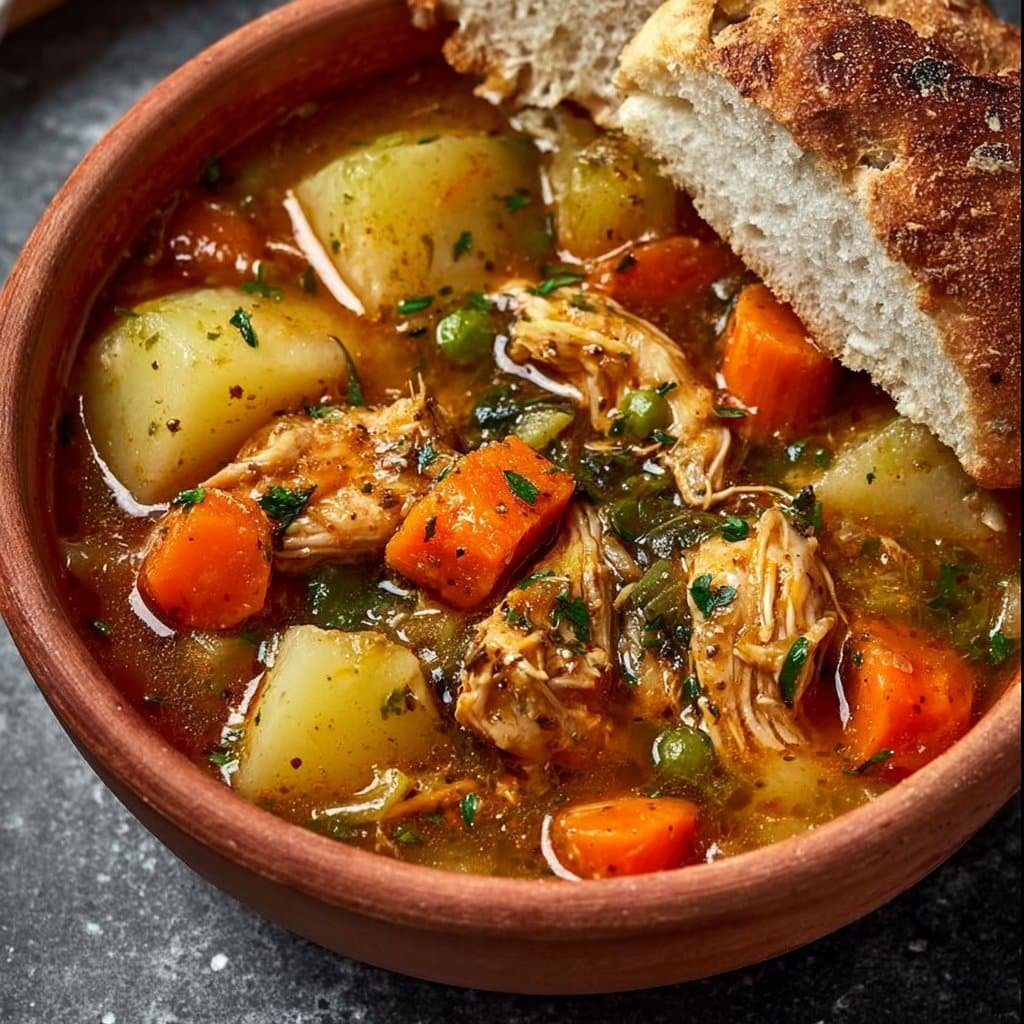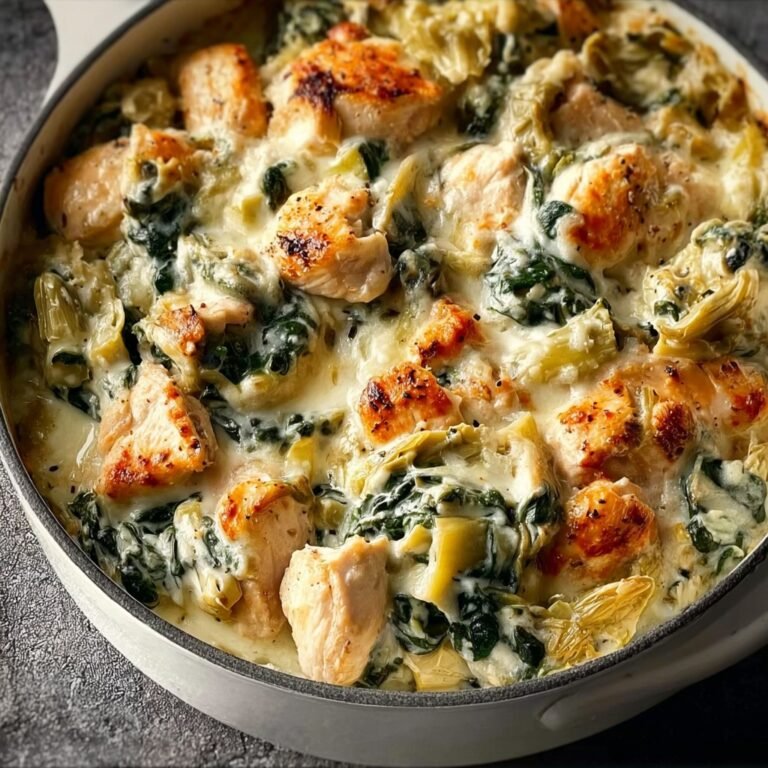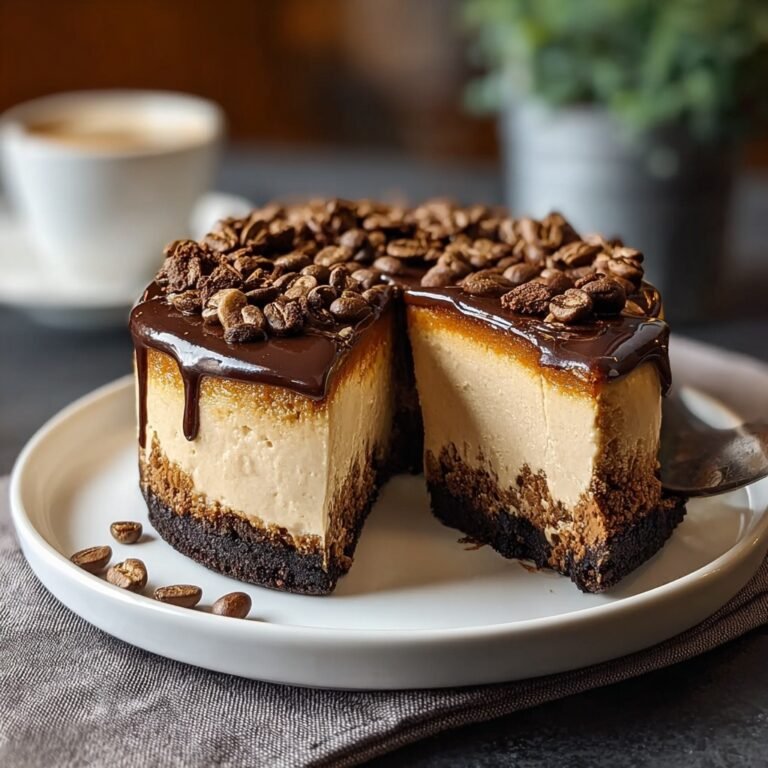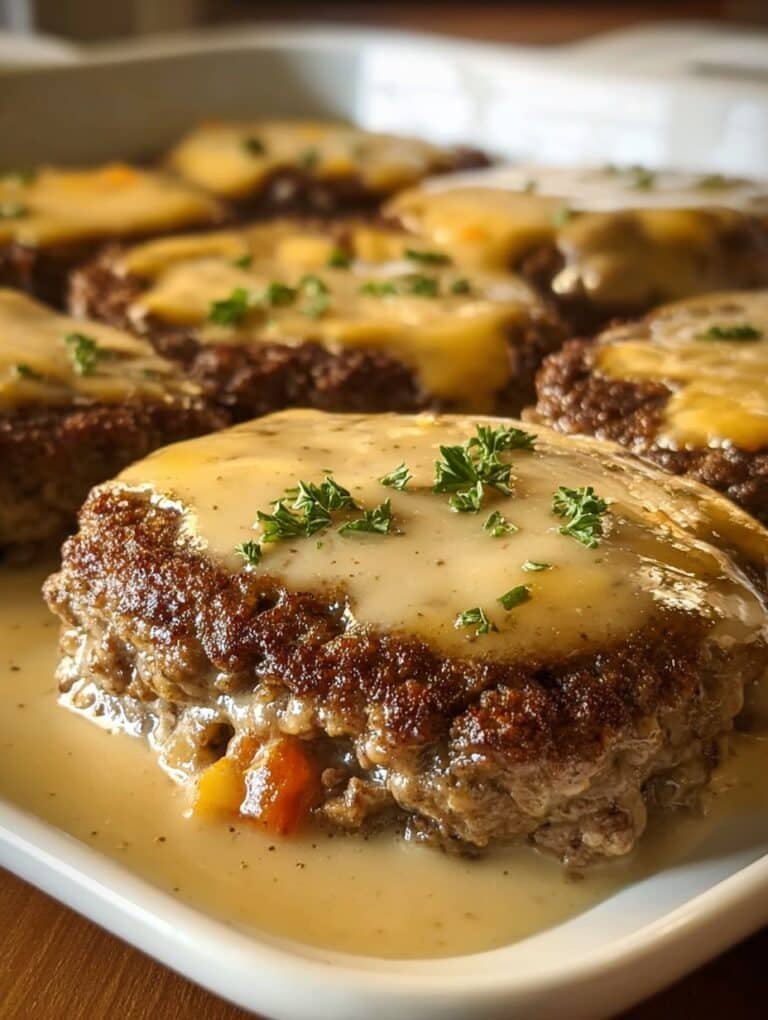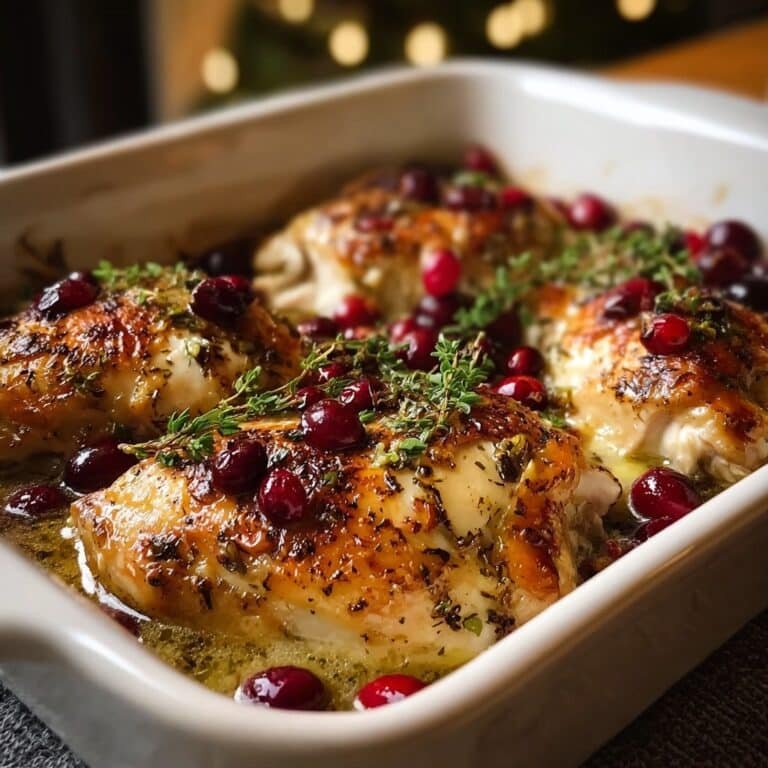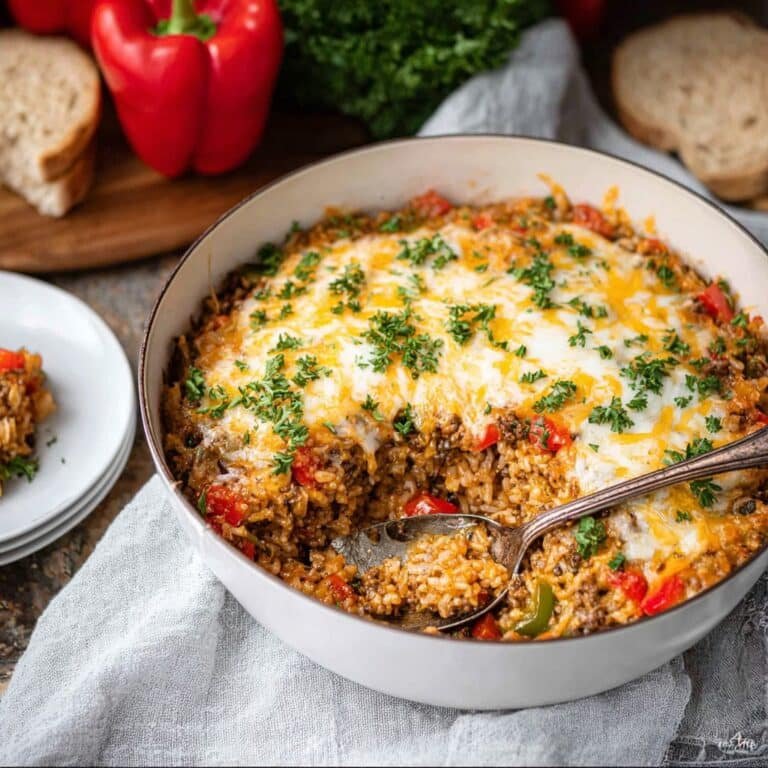Catching Up and Dishing Out Comfort
You know how sometimes you just want food that feels like a hug? That’s this Hearty Chicken and Vegetable Stew for me. There’s an old snow day memory tangled up in this recipe: we were stuck inside, power flickering, and my dad insisted he’d warm us up with something ‘properly filling’ (while grumbling about carrots, as always). I mean, is it even a stew unless someone complains about peeling potatoes? These days I throw it together when I need a big pot of coziness, or honestly, just something satisfying that doesn’t require a ton of babysitting on the stove. My partner swears it’s magic for chasing away cold feet, literal or metaphorical, though I suspect the second helping is the real remedy.
Why I’m Always Coming Back to This Stew
I make this when I’m too tired to fuss over dinner and want leftovers that don’t taste like afterthoughts (plus it’s one of those rare kid-approved meals in my house). My family goes slightly feral for this because every bite is chunky, warm, and basically a meal in itself. (I used to dread chopping veg for “yet another stew,” but turns out, letting them be a bit uneven gives better texture. Who knew, right?) It’s easy to adapt: use what’s knocking around in your veg drawer, raid the freezer, go wild. And the best bit? The kitchen smells like you’ve really put the work in, even if you’ve just been half-distracted by laundry.
What You’ll Need (Substitute or Swap as You Like)
- 2 lbs chicken thighs (skinless, boneless is easiest, but drumsticks add a nice richness—my grandma always insisted on ‘nothing but thighs,’ but I’ll sometimes grab whatever’s on sale, no drama)
- 3 medium carrots, sliced (sometimes I use parsnips, especially if carrots are looking a bit sad)
- 2 big potatoes, diced (waxy or starchy—it’s all fine, Yukon Gold’s my favorite)
- 1 large onion, chopped (red onion if you’re feeling fancy, or a couple shallots—doesn’t matter, honestly)
- 3 celery stalks, sliced
- 2-3 cloves garlic, minced (more if you love it, less if you fear vampires or meetings the next day)
- A handful of green beans, chopped (or frozen peas, or skip entirely if you’ve got neither)
- 1 cup diced tomatoes (canned is fine—sometimes I just use a tin of whole tomatoes and squish ’em up—saves time!)
- 4 cups chicken stock (homemade if you’ve got time, but I lean on bouillon cubes more often than not)
- 2 bay leaves (if you remember)
- 1 tsp dried thyme (fresh is lovely but hardly essential)
- Salt, pepper, olive oil
- Optional: a glug of white wine, a knob of butter at the end, or a sprinkle of parsley (only sometimes remember this)
Let’s Get Cooking (Step by Step…ish)
- First up, heat a big pot or Dutch oven over medium heat. Splash in a bit of olive oil. Season your chicken with salt and pepper. Brown the chicken pieces in batches so they don’t just steam—takes about 3-4 minutes per side. (If you’re short on time, get a nice color on just one side—no one’s judging.) Remove chicken and set aside, trying not to eat the crispy bits off the plate. Seriously, it’s tempting.
- Chuck in the onions, carrots, potatoes, celery, and a pinch of salt. Sauté until softened, about 8 minutes—and don’t sweat it if there’s some browning stuck to the bottom; that’s your flavor jackpot. Add garlic and cook for another minute (this is where I usually sneak a taste).
- Pour in your wine (if using), let it bubble for a minute so it smells less boozy. Add in your tomatoes, chicken stock, bay leaves, thyme, and return the chicken to the pot. Give it all a gentle stir. If it doesn’t look soupy enough, just splash in a bit more stock or even water. (Don’t panic if it looks a bit weird at this stage—it always does!)
- Bring it to a boil, then immediately lower to a simmer. Pop a lid on (cracked open a bit), and let it gently bubble away for about 35-40 minutes, or until the chicken is fork-tender and the veg are soft, but not mushy. If your green beans (or peas) are fresh, add them in for the last 10 minutes; if frozen, chuck ‘em in for the last 5. (You can poke at it with a spoon, but honestly, I use this time to tidy up or just scroll my phone.)
- Right at the end, taste for salt and pepper. Sometimes I swirl in a dab of butter for, I dunno, extra comfort. (Don’t skip this. Actually, on second thought, only if you like rich stews.) Remove bay leaves—if you can find them!
- Serve up big bowls and add parsley if you remembered to buy it. Or not. Up to you.
Notes From My Previous Kitchen Experiments
- I used to think peeling the potatoes made it fancier, but leaving the skins on gives a more earthy flavor (plus it saves SO much time)
- Once I dumped in too much thyme and it tasted like eating a pine forest. Stick to the amounts here, trust me on this one
- If it’s too thick, add a splash more stock; if it’s too soupy, just let it simmer with the lid off for a bit. The stew always finds its way
Stew Experiments: Variations I’ve Tried (and a Fail!)
- With sweet potatoes instead of regular—yummy, but makes it sweeter, which my partner loved (the kids, less so)
- Add in a can of chickpeas for protein and bulk—works great if you want leftovers to stretch
- Once tried a vegan version with mushrooms instead of chicken—it tasted too earthy for me, but hey, maybe you’ll like it?
What You Need—and What To Do If You Don’t Have It
- A big heavy-bottomed pot or Dutch oven (if you only have a regular soup pot, just stir a bit more so nothing sticks, it’ll be grand)
- Sharp-ish knife (even your favorite wonky paring knife works—I sliced with a bread knife once in a pinch, not recommended but hey, it works)
- Cutting board, or literally any clean surface; I used to use a wooden serving tray during a kitchen remodel, probably not best practice but here we are
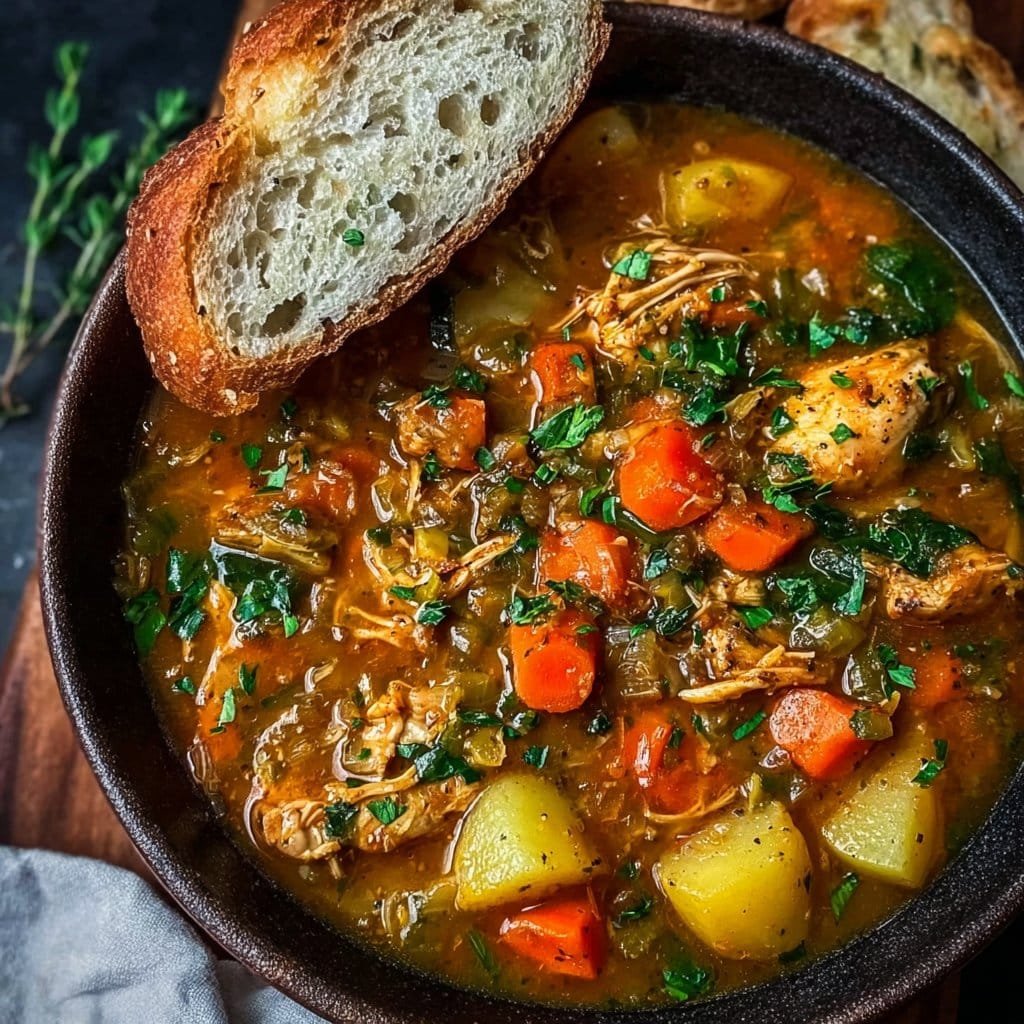
Storing Your Stew, If It Survives That Long
Cool leftovers and pop them in a container (preferably one with a lid that doesn’t leak all over your fridge; learned that one the hard way). Keeps for up to 3 days in the fridge, possibly longer but who am I kidding, it disappears fast in my house. Or freeze it for up to a month—but be warned, spuds do get a bit mealy after thawing. Still tastes like home.
How I Serve It—Tradition, Kind Of
Big bowls, lots of crusty bread for dunking (or buttered soda bread if I’ve actually remembered to bake). Sometimes I’ll top with a spoonful of sour cream or a sprinkle of cheddar—my youngest swears by this. And, on chilly nights, we eat it huddled on the sofa in front of an old movie—blankets, optional but encouraged.
Things I Learned The Hard Way (aka Pro Tips)
- Don’t rush browning the chicken—once, I tried to speed things up, everything turned sort of grey and blah. Not worth it.
- Actually, I find it works better if you add green beans late—otherwise, they turn into absolute mush. Trust me, I’ve learned.
- If you forget the bay leaves, don’t stress, but do taste for seasoning at the end—it can make a surprising difference.
Real Questions I’ve Gotten (FAQ Style)
- “Can I use chicken breast instead of thighs?” Yeah, but it dries out a bit faster, so keep an eye on the cooking time—and add more stock if it looks dry. (Honestly though, thighs win every time for me)
- “How do I make this in a slow cooker?” Easy—brown everything on the stove, then dump it all in the slow cooker and let it go for 6 hours on low. (Here’s a good guide I like: Slow Cooker Conversion Tips)
- “Can I make this gluten-free?” Yup, it’s naturally gluten-free unless you serve it with a wheaty bread. Just check your stock cubes for sneaky flour.
- “I hate celery. Do I have to include it?” Nope, skip it—or swap for extra carrots, or a shake of celery salt. (I personally can’t tell the difference if it’s left out.)
- “Best side dish for this?” I’d say crusty bread, but I’ve heard some folks serve it over rice or mash. Never tried it myself, but sounds lush.
- “Can I add lentils?” Probably, but it will thicken up a lot, so keep an eye on your liquid. Also, red lentils disappear into it, which is magic or weird, depending on who you ask.
- “My stew is too salty! Help!” Add a raw potato for ten minutes or so, then fish it out—it soaks up some salt. Or just dilute with a splash of water and quietly pretend you did it on purpose.
Oh, if you want more stew inspiration, check out BBC Good Food’s collection of stews—some utterly brilliant and bonkers ideas on there. And if you’re lost on prepping veg, this chopping guide always makes me feel like a pro (or at least less likely to chop off a finger). Anyway, whatever you do, just dive in—stew is not about following a map, it’s more like wandering around and finding something good for yourself.
Ingredients
- 1.5 lbs boneless, skinless chicken thighs, cut into bite-sized pieces
- 2 tablespoons olive oil
- 1 large onion, chopped
- 3 garlic cloves, minced
- 3 carrots, sliced
- 3 celery stalks, chopped
- 2 large potatoes, cubed
- 1 cup green beans, trimmed and cut into 1-inch pieces
- 4 cups low-sodium chicken broth
- 1 teaspoon dried thyme
- 1/2 teaspoon dried rosemary
- 1 bay leaf
- Salt and black pepper to taste
- 2 tablespoons fresh parsley, chopped (for garnish)
Instructions
-
1Heat olive oil in a large pot over medium-high heat. Add chicken pieces and brown on all sides for about 5-6 minutes. Remove and set aside.
-
2Add the chopped onion, carrots, and celery to the same pot. Sauté until the vegetables begin to soften, about 5 minutes. Stir in garlic and cook for 1 minute.
-
3Return the browned chicken to the pot. Add potatoes, green beans, chicken broth, thyme, rosemary, bay leaf, salt, and pepper. Stir to combine.
-
4Bring to a boil, then reduce heat to low and cover. Simmer for 40-45 minutes, stirring occasionally, until chicken is cooked through and vegetables are tender.
-
5Remove bay leaf. Taste and adjust seasonings as needed. Garnish with chopped fresh parsley before serving.
Approximate Information for One Serving
Nutrition Disclaimers
Number of total servings shown is approximate. Actual number of servings will depend on your preferred portion sizes.
Nutritional values shown are general guidelines and reflect information for 1 serving using the ingredients listed, not including any optional ingredients. Actual macros may vary slightly depending on specific brands and types of ingredients used.
To determine the weight of one serving, prepare the recipe as instructed. Weigh the finished recipe, then divide the weight of the finished recipe (not including the weight of the container the food is in) by the desired number of servings. Result will be the weight of one serving.
Did you make this recipe?
Please consider Pinning it!!

